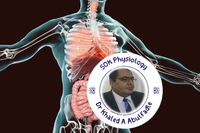admin
Admin

عدد المساهمات : 9700
تاريخ التسجيل : 06/08/2009
 |  موضوع: MCQs on Nerve and Muscle Physiology with their answers موضوع: MCQs on Nerve and Muscle Physiology with their answers  الأربعاء مايو 31, 2017 2:02 pm الأربعاء مايو 31, 2017 2:02 pm | |
| | |
|
Dr. Heba
عدد المساهمات : 1
تاريخ التسجيل : 02/12/2019
 |  موضوع: رد: MCQs on Nerve and Muscle Physiology with their answers موضوع: رد: MCQs on Nerve and Muscle Physiology with their answers  الجمعة أكتوبر 01, 2021 2:19 am الجمعة أكتوبر 01, 2021 2:19 am | |
| | |
|
admin
Admin

عدد المساهمات : 9700
تاريخ التسجيل : 06/08/2009
 |  موضوع: رد: MCQs on Nerve and Muscle Physiology with their answers موضوع: رد: MCQs on Nerve and Muscle Physiology with their answers  الجمعة أكتوبر 15, 2021 5:36 am الجمعة أكتوبر 15, 2021 5:36 am | |
| | |
|
